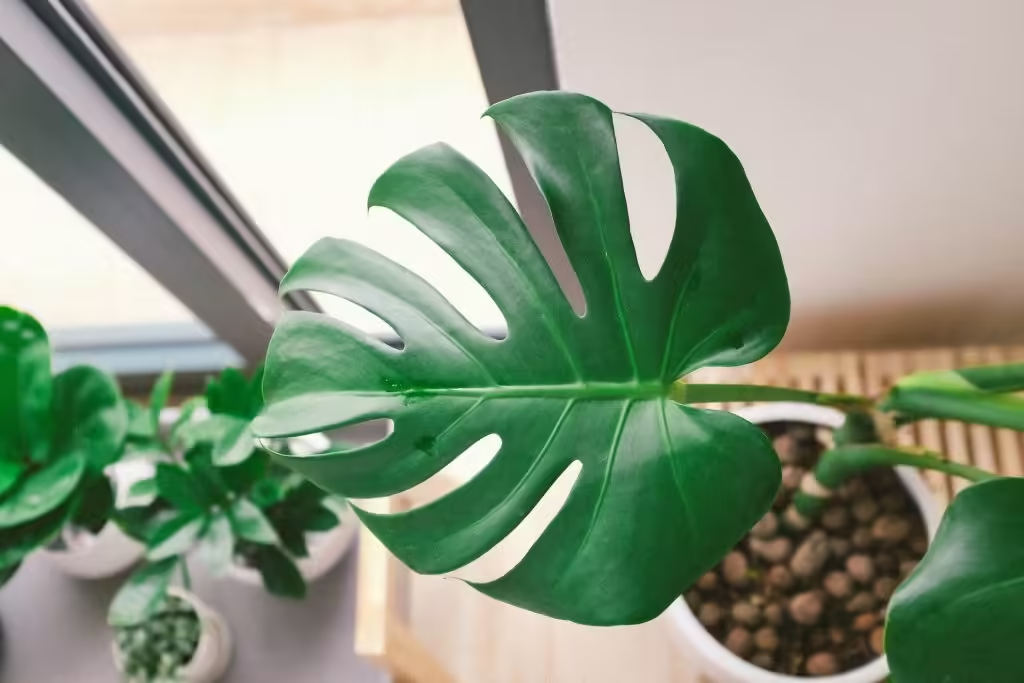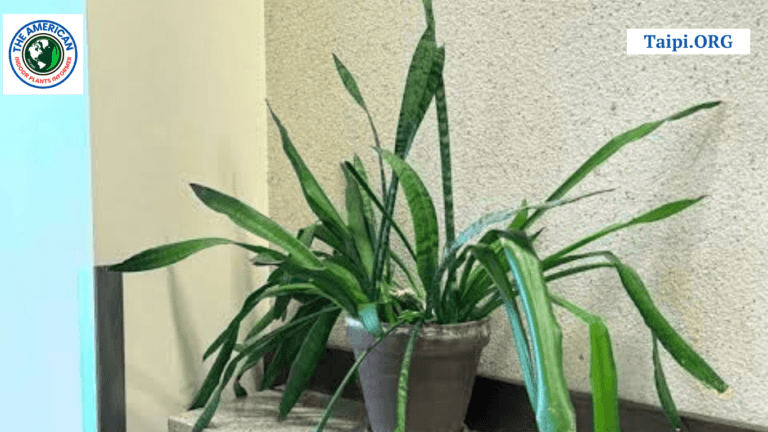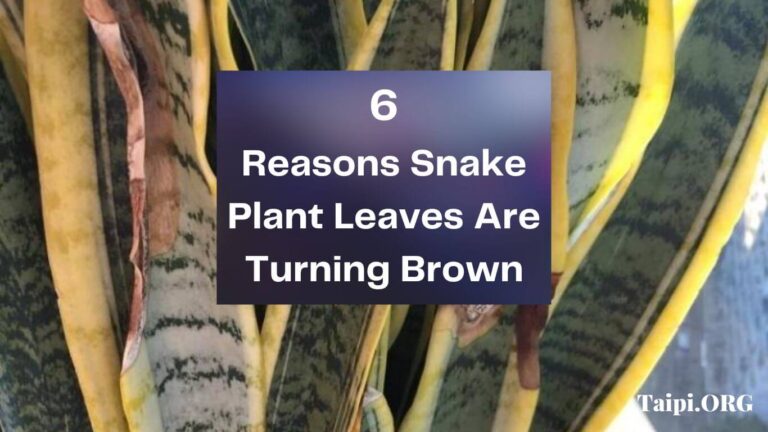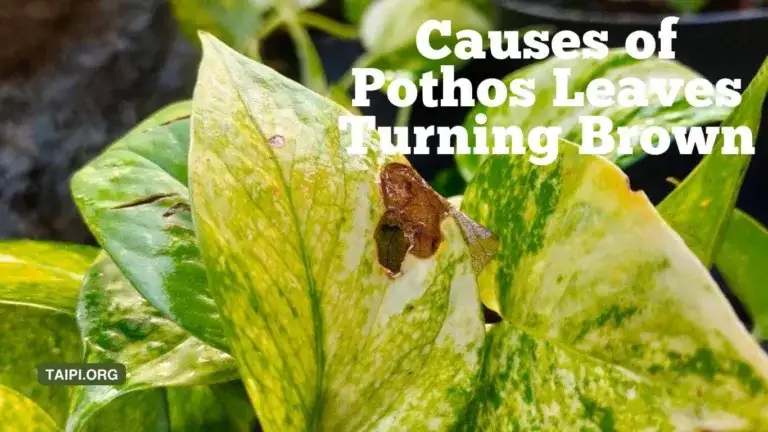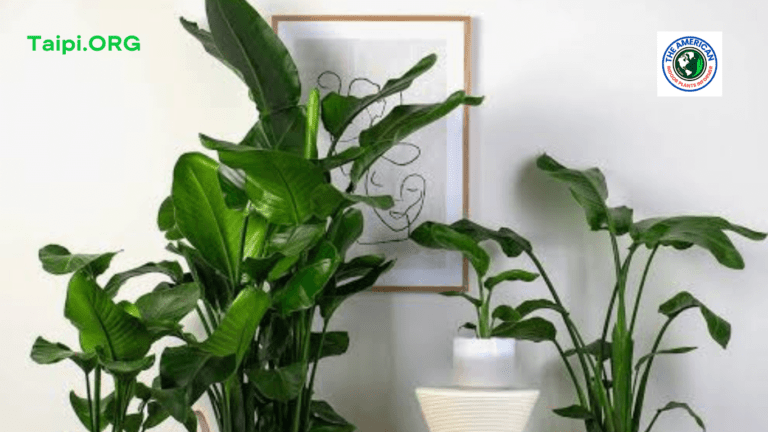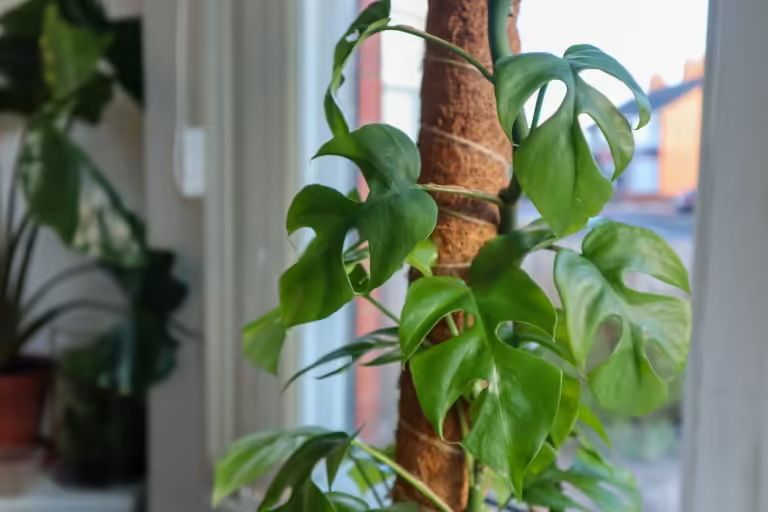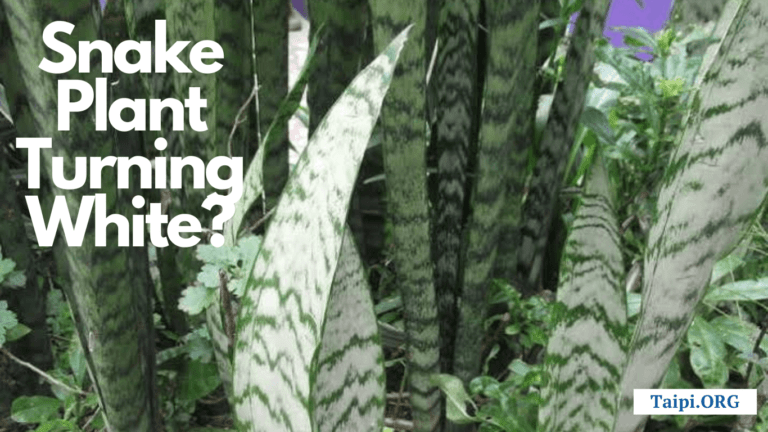Monstera Deliciosa (Swiss Cheese Plant) Complete Care Guide
In today’s post, we are gonna talk about how to grow thrive & healthy Monstera Deliciosa Plant with simple & easy caring tricks.
You can easily achieve a Massive Monstera Deliciosa known as the Swiss Cheese plant, with thick lush growth with that lovely fenestration in the leaves that the plant is known for by following these simple care tips.
Lighting Requirement for Monstera Deliciosa
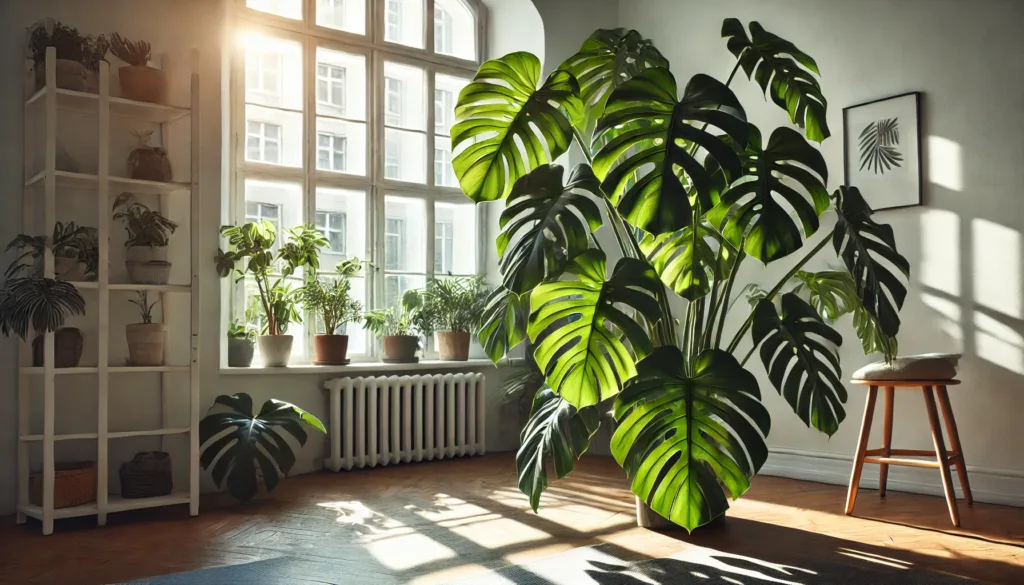
Light is one of the biggest factors and whether you’ll be able to grow extra-large monsteras with beautiful fenestration in the leaves. If you’ve not heard the term fenestration before, then this is the slits and holes in the leaves that the plant is famous for and it gets this through age and having lots of sunlight.
You’ve probably noticed smaller Monsteras in your local garden center that lack the fenestration in the leaves and the reason for this is that Monsteras only really developed this as they get older.
Juvenile Monsteras will have leaves without any slits and this is perfectly normal. Just give the plant some time. It will start to push out new leaves that have those famous slits, provided you’re giving it enough light.
You’ll even see this on older plants the leaves, closer to the base of the plant, will be the first leaves and they will lack fenestration compared to the newer ones. A Monstera Deliciosa that is not getting enough light will not push out new leaves with lots of fenestration. On the other hand, its growth will be much slower.
Monsteras climb up surrounding trees in the jungle and as they get higher they receive more and more light and develop more fenestration.
So that the low leaves can access sunlight too. So give your plant as much indirect sunlight as possible.
In my experience, you can even give this plant some hours of direct sun. My younger Monstera that I have in my west-facing living room windowsill, receives about five hours of afternoon sun every day and it’s looking healthy with lots of fenestration.
I’ve always had this plant in that spot ever since I rooted the cutting. So it’s used to being in this spot. If you have a Monstera that is in a darker spot, you’ll want to move your plant closer to the direct sun over a few weeks. This will allow the plant to become used to direct sun over time, as a result, the leaves won’t scorch.
I wouldn’t leave the plant on a south-facing windowsill all day as this will probably be too much direct sunlight and the leaves will probably burn. Therefore, a few hours is fine in my experience.
Giving your Monstera lots of light will also encourage the plant to send out new leaves much quicker.
By doing this simple test, you will see whether you have given enough light to your Monstera plant. Look at the stems of your plant, and how big is the gap between the leaves. If the gap is large then your plant is not getting enough light and stretching itself out. If they’re close together, then it’s doing well.
Staking
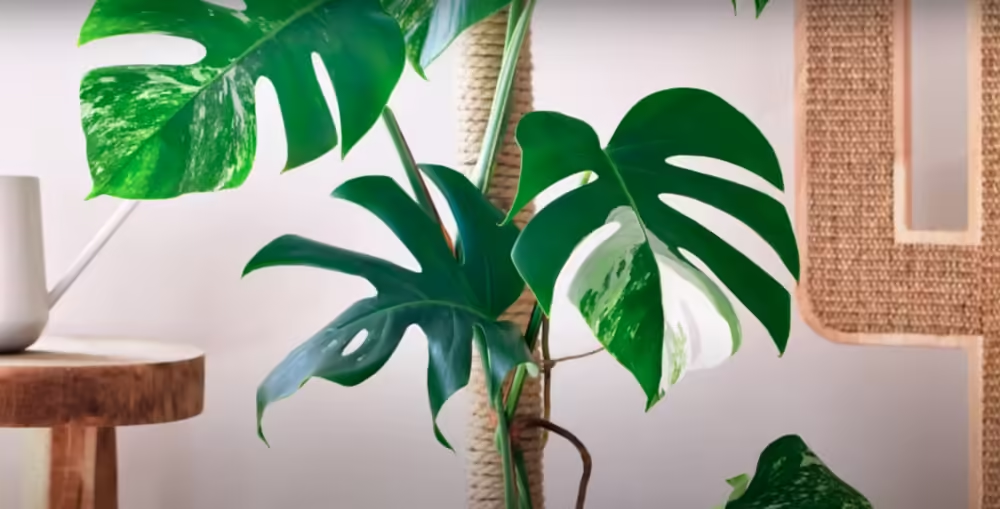
If you have a Monstera then you will want to stake it up something to climb up. This is how climbing plants achieve massive leaves. As a result, your plant develops larger leaves. The more can grow vertically because it’s maximizing leaf surface area that you can then use to photosynthesize and store energy.
If you let your plant grow freely without a pole or bamboo sticks, then you’ll eventually have a plant that is top-heavy and even lopsided. I found this out the hard way with my Monstera in my bedroom that I’ve had for years. I didn’t have it growing up anything and it grew lopsided and it kept falling over. I’ve recently repotted it and tied it to some bamboo and now it’s much happier.
Giving your plant lots of light and having it climb up something will turbocharge the growth of your Monstera and you’ll have a massive plant in no time.
Watering Swiss cheese plant
With regards to watering, treat your Monstera Deliciosa a little mean. This means, keep your plant on the drier side they tend to respond well to not being watered often.
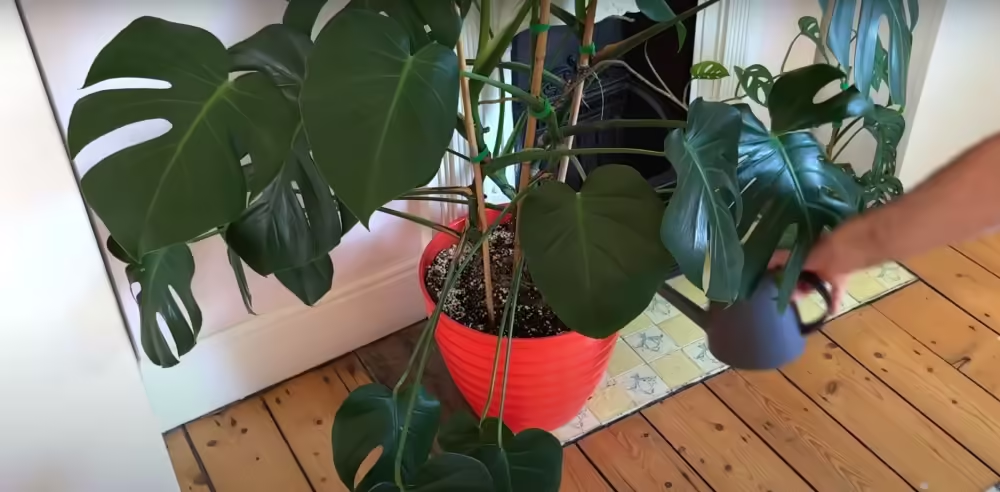
If you saturate the soil of the plant often then the plant is not going to respond well and growth will be stunted. I tend to water my Monstera plants about once every two or three weeks in the summer which is typically less often than my other houseplants. Therefore, they all respond very well to that schedule. Even if I forget to water them for longer which I have done lots of times, by the way, I never see this plant droop its leaves and it’s pretty unusual like that.
I probe all my plants with my trusty moisture meter and only when it says the plant is dry do I water the plant.
Roots
Monsteras tend to like a compact pot to live in if they are transferred to a pot that is much larger than the root ball of the plant, they tend to get a bit fussy and slow down their growth.
If your monster is root bound then it’s honestly not a great rush to up pot the plant. And, they’re much more forgiving than other plants like Syngonium or Tradescantia.
I had my Monstera in my bedroom in the same little pot for years and you wouldn’t have known by looking at the plant. Its growth was a little slower than it could have been. So you don’t want to wait too long to change the pot, but just know it’s probably not super urgent.
Fertilizing Monstera Deliciosa Plant
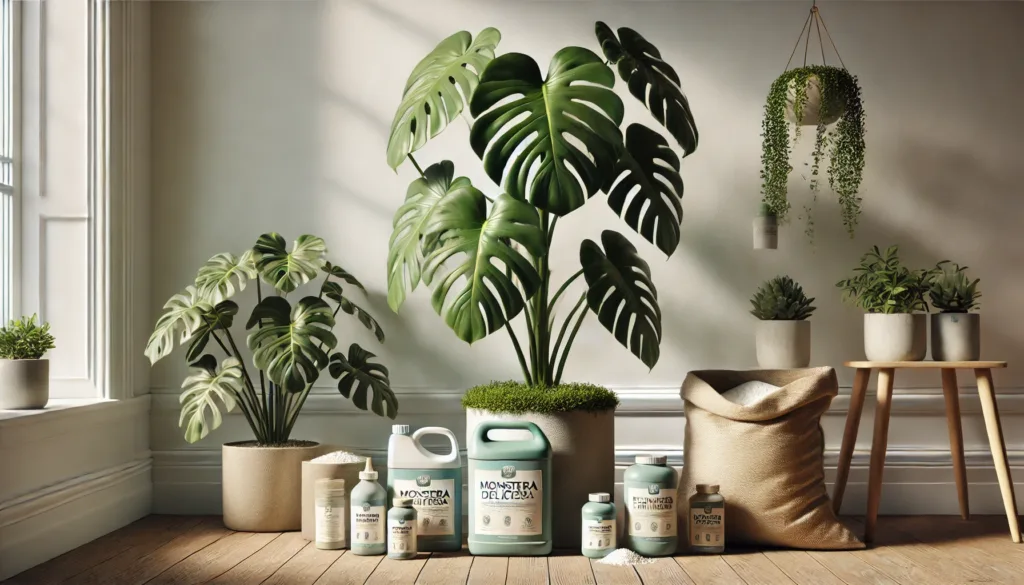
Fertilizing your Monstera Deliciosa is important for it to get the nutrients it needs to push out new growth. But I’ve found that this isn’t the most important thing for big bushy monsters.
Fertilizing your plant gives it the macro micronutrients it needs to have glossy green leaves. But in my experience lighting and having it climb up something is generally more significant for its growth.
That being said, make sure you do fertilize your plant during the spring and summer and not during the winter. Be careful not to give the plant too much fertilizer by following the instructions on the packet. Otherwise, you risk giving the roots fertilizer root burn which causes long-term damage to the plant and growth will be inhibited.
Pruning
Be careful about pruning your Monstera Deliciosa. Especially, if your leaves have good fenestration in them. This is because, when you cut the stem of a Monstera a new stem will grow where you cut. But that new stem will be juvenile and will not have fenestration in the leaves. I generally only prune away damaged stems or leaves to tidy up the appearance of the plant.
If a stem is looking healthy with lots of leaves that have great fenestration, I tend to leave it alone.
Pruning your plant also allows you to propagate your plant and get more Monsteras for free.
Common Disease with Monstera Deliciosa
Diseases such as powdery mildew can stunt the growth of your Monstera Deliciosa may be one of the reasons why your Monstera is not pushing out lots of new growth.
Powdery mildew is a fine white powder that can affect any part of the plant above the soil line. More severe cases can allow leaves and stem to become yellow along with stunted new growth. Powdery mildew is most likely to attack vulnerable plants such as Dehydrated or unfertilized monsteras as well as plants that have poor air circulation, high humidity, and excess moisture sitting on the leaves.
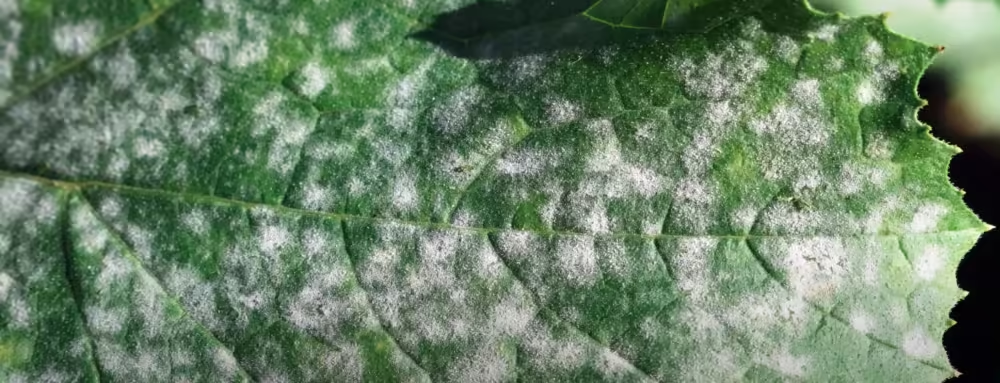
Prevention of disease is key here, rather than curing problems that occur. So keep your plant clean and tidy by regularly pruning away dying leaves or stems and water and fertilizing your plants correctly.
Also if you’re misting your plant then stop this does nothing for your plant and increases the risk of mold or rot developing on the plant.
Monstera Aerial Roots
You probably notice weird-looking black things growing out of the stems of your Monstera. These are called the Aerial Roots of the plant. Most vining plants such as Monsteras Philodendrons and Pothos have these growing from underneath a leaf node. Interestingly the plant uses these aerial roots to latch onto and grow up surrounding plants in the jungle where they naturally live.
They do this so, they can climb higher up the canopy of the jungle to access the light from the sun.
It’s perfectly fine to cut these off in our homes. It won’t harm the plant. But if we encourage them to grow into the soil of the plant then this can strengthen the plant and will support its growth. Encouraging the aerial roots to grow into the soil rather than hanging in the air stabilizes the plant. You will notice much more stable and stronger plants with larger leaves.
Read More – How to Pick the Perfect Pot for Your Plant
Propagation
Monstera Deliciosa is surprisingly easy to propagate and turn into more Monstera plants. Propagating the plant is a great way of creating another really large plant. the size of your Monstera will largely depend on how many individual plants are actually in the pot. Each stem that is growing out of the soil is an individual plant. The more stems there are, the larger the plant can potentially become.
so we can take multiple cuttings from our mother plant, root them and then plant them into the same pot. You’ll essentially have multiple plants in the same pot and this will result in a very large-looking plant If you give it enough time.
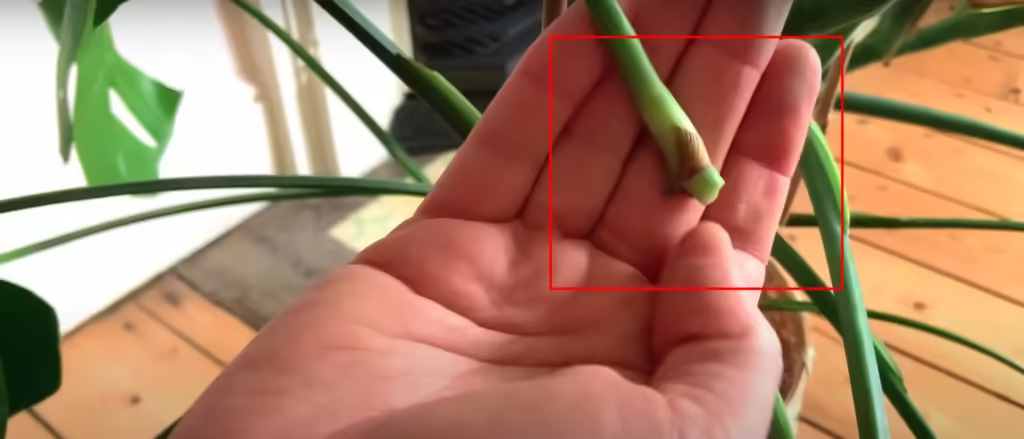
Taking cuttings from your plant and rooting them is so easy. All we do is locate a leaf node on a stem and make a cut underneath. Place that cutting in a jar or glass of water and leave it to root for about four weeks.
Once they’re about two or three inches of root on the cutting, plant them up into a pot with some soil. Then, new stems will start to grow in about three weeks. The light is as important to cuttings as the plant itself. So keep the cuttings in a nice bright spot in your home.

